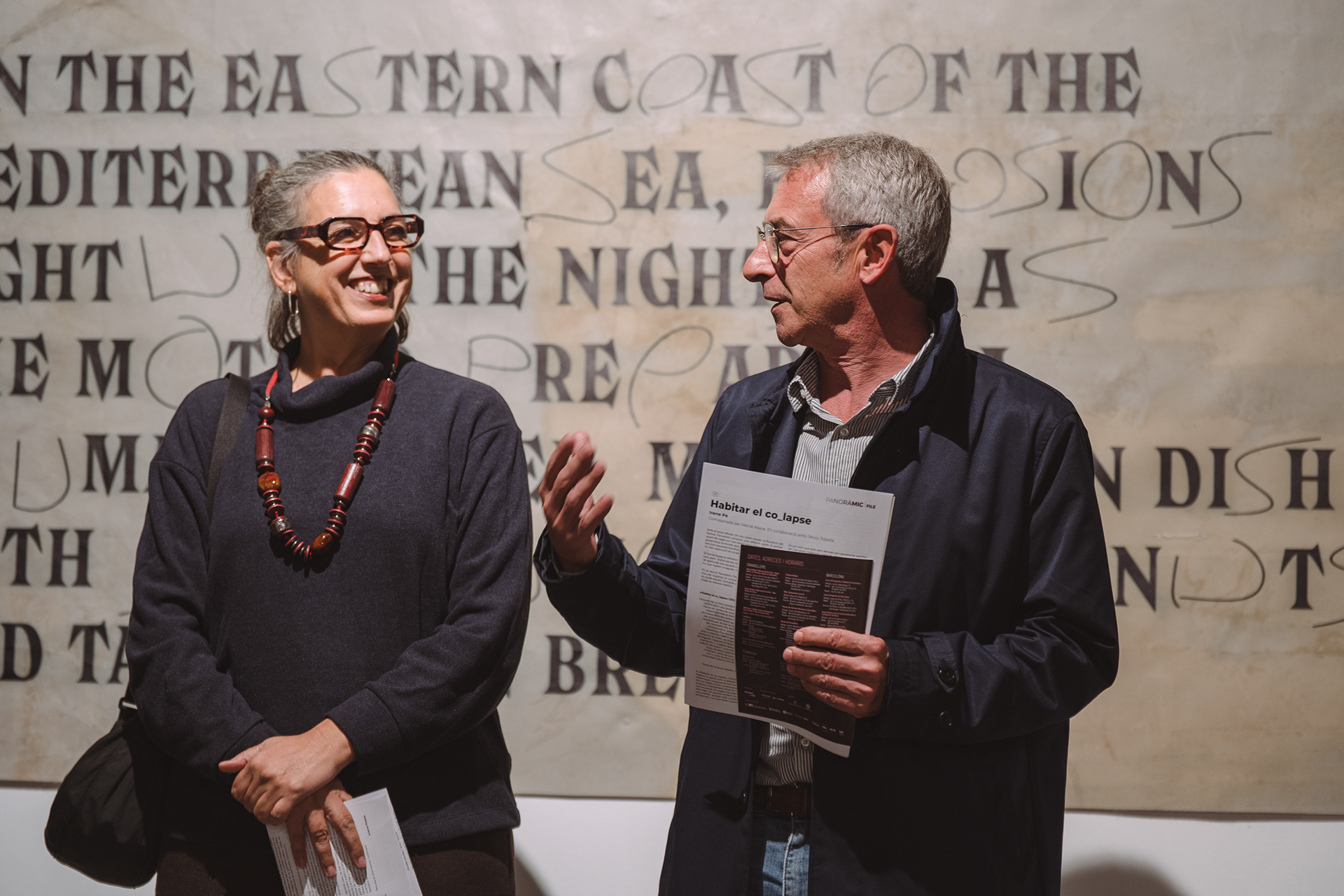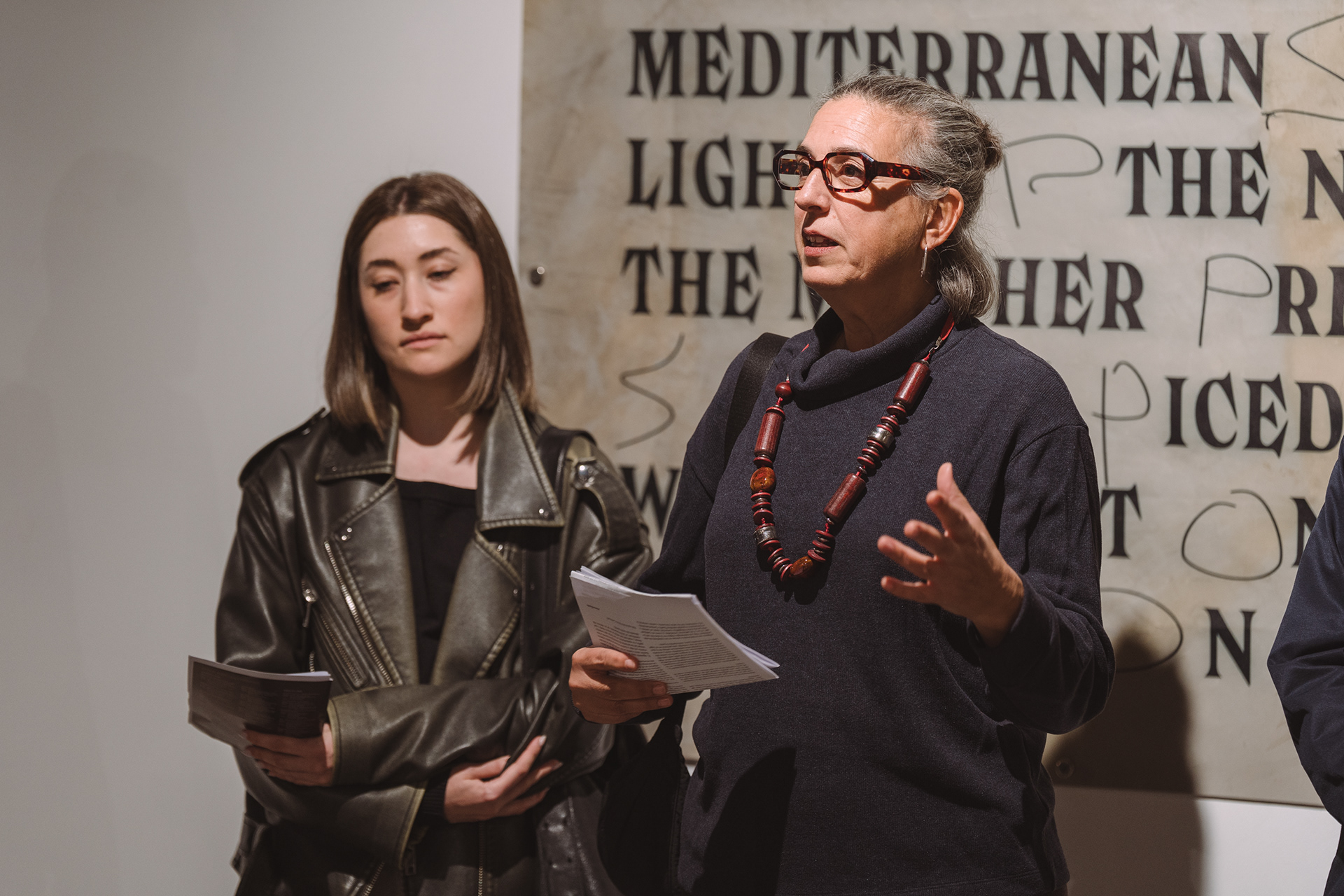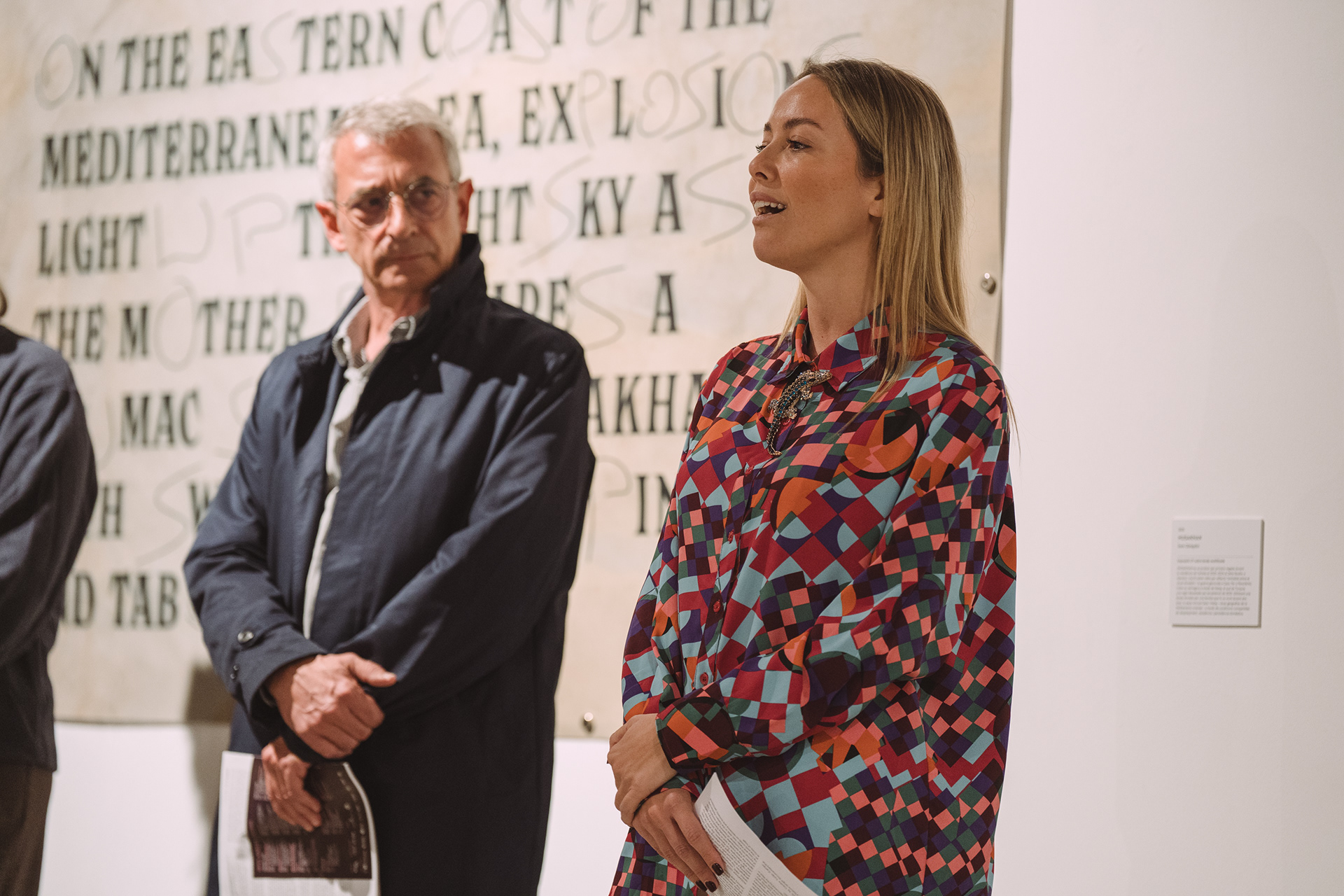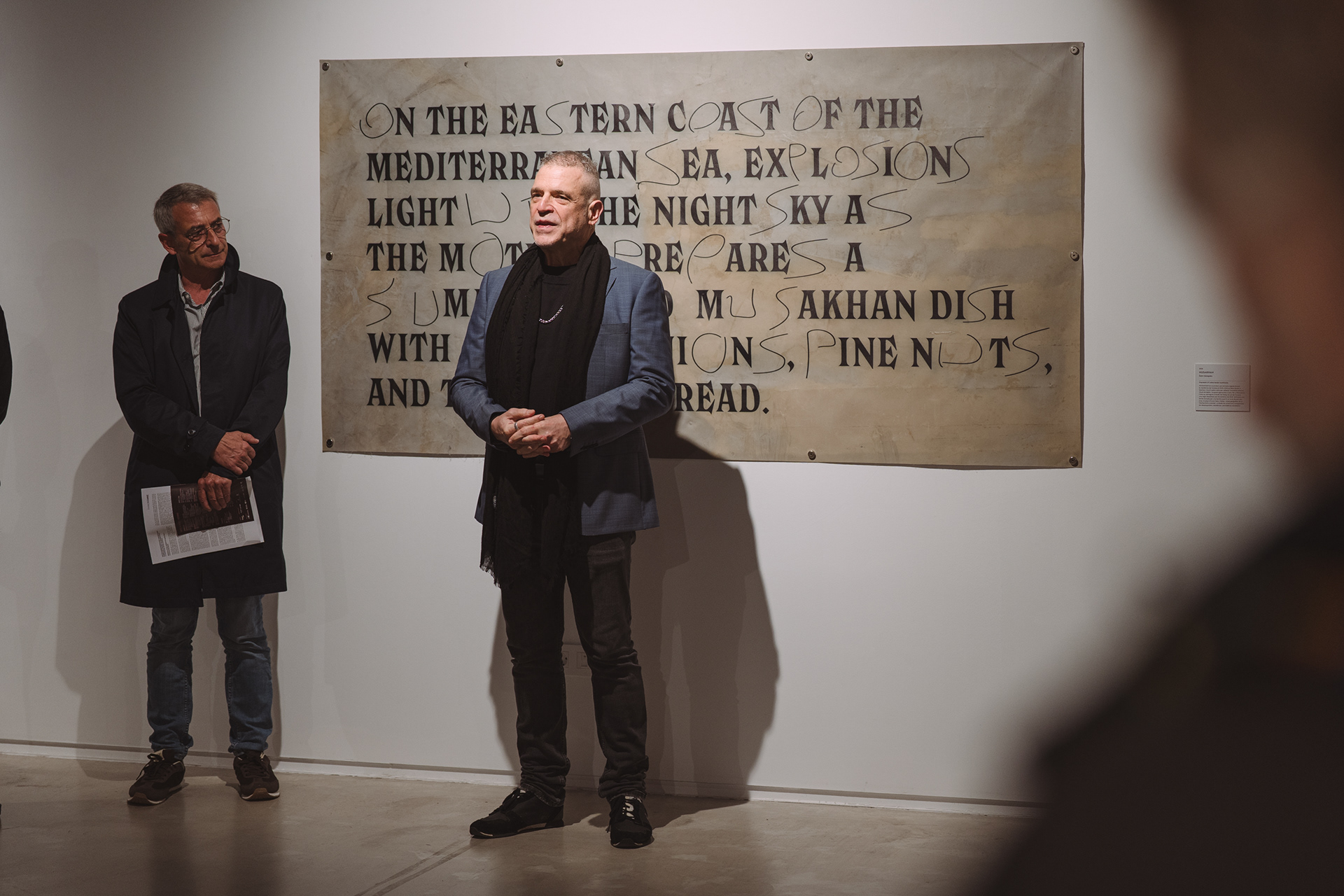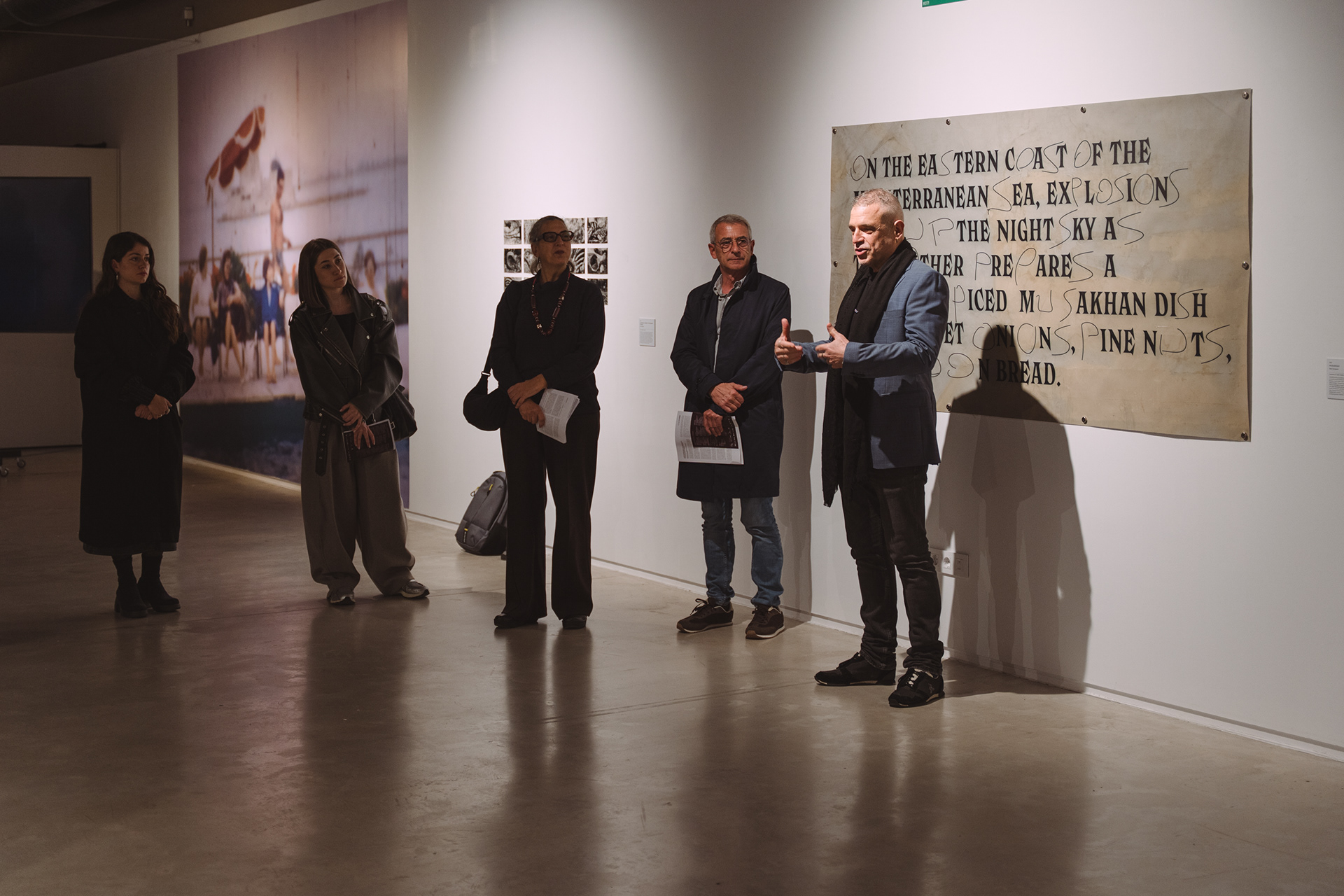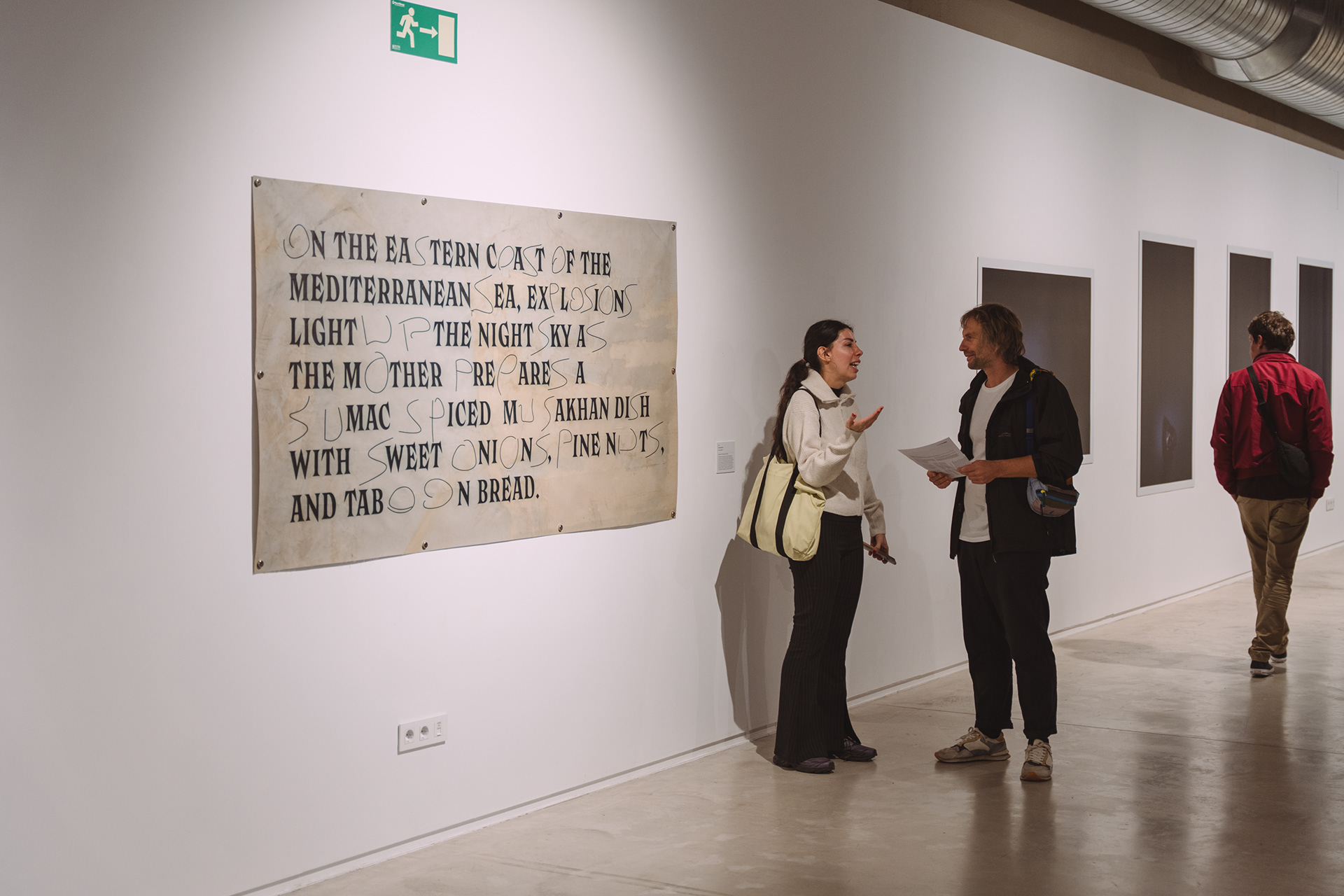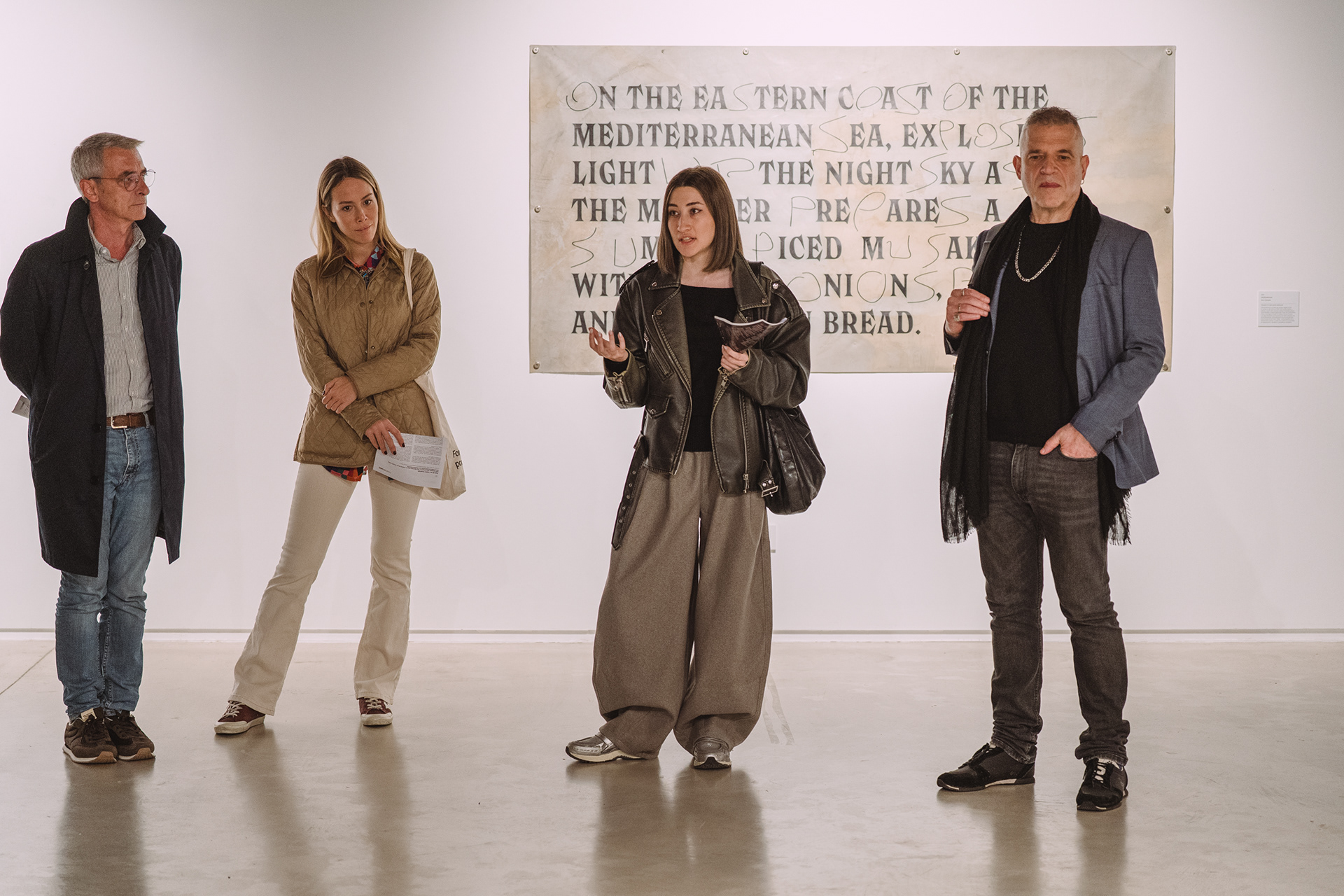UV print on discarded tent , 2025
The word Musakhan means “something that is reheated.” It’s also the name of a Palestinian dish—bread, onions, chicken, sumac, and olive oil—but what interested me was the word itself: the act of warming something that once held heat. The word isn’t limited to physical warmth; it also speaks of activation, reactivation, stimulation, and keeping something alive. But over time, I realized that the act of “reheating” changes direction depending on who performs it; in some hands, it becomes a method of survival, while in others, a way for power to keep oppression warm.
For this work, I developed a bespoke typeface called Hamaset. The word comes from an Arabic loanword meaning enthusiasm, courage, and heroism. In contemporary Turkish discourse, however, politicians have recontextualized it to signify populism and demagogy. This shift reflects how language, like history, is constantly shaped by changing power structures. Hamaset represents these contested spaces—where typography becomes a battleground for ideological transformation. The letters are monumental and sharp on the outside, but soft and round on the inside. The typeface Hamaset consists only of uppercase letters.
The first Musakhan was a sculptural work that spelled the word in large metal letters, mounted on a structure resembling a concrete barrier—the kind you see around construction sites or borders—an object that both protects and divides.
The second iteration, this Musakhan, continues that exploration but through a different material and geography. For this work, I was connected to a family in Hatay, in southern Türkiye, a region devastated by the 2023 earthquake. The family had lived in a tent for two years. When they finally moved into a permanent home, they offered me that tent.
That tent became the ground of this work—a surface that carries both shelter and failure. Although the earthquake was a natural event, the collapse of so many buildings was not. Corruption and negligence turned a natural disaster into a human-made catastrophe in Hatay.
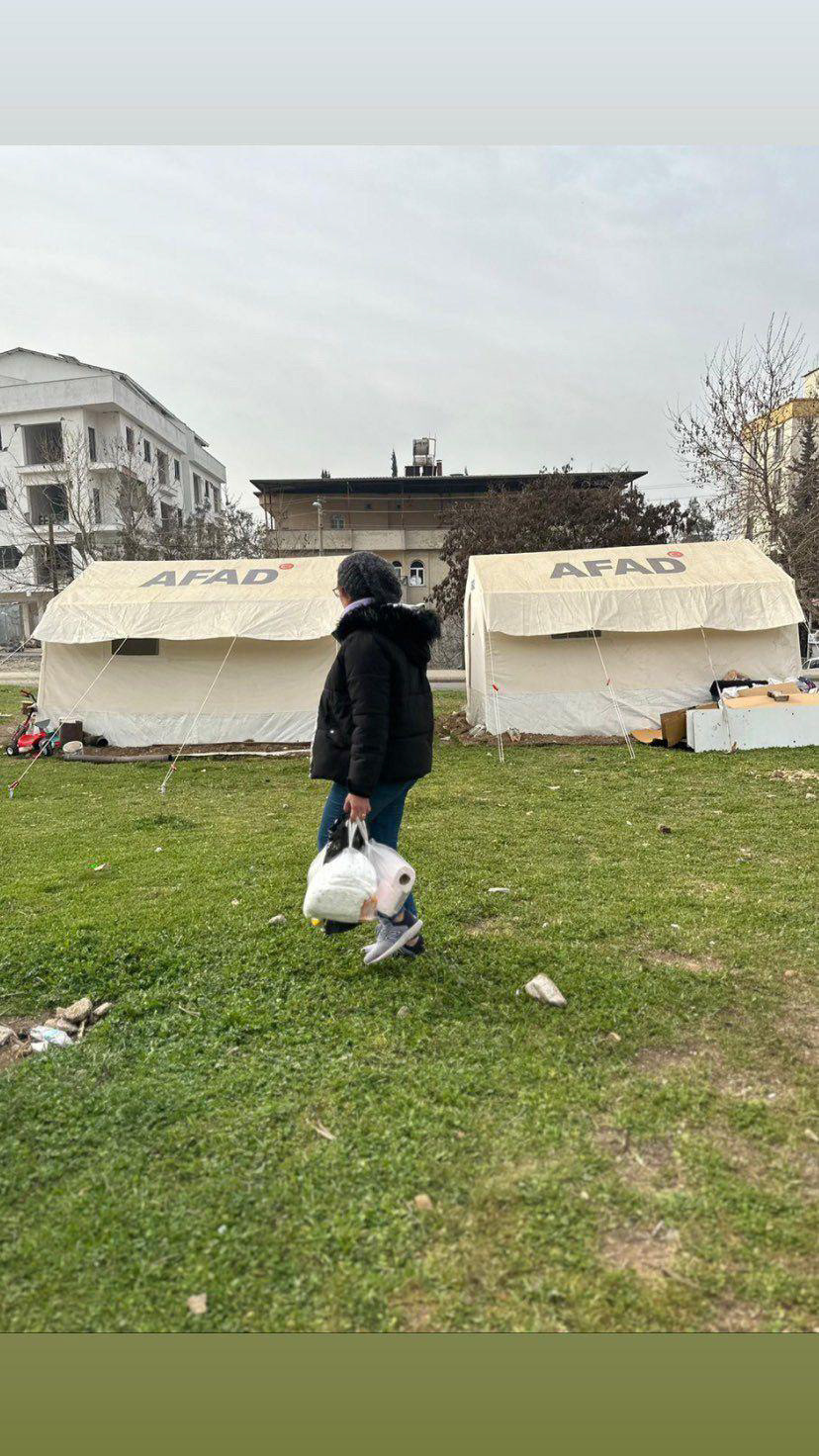
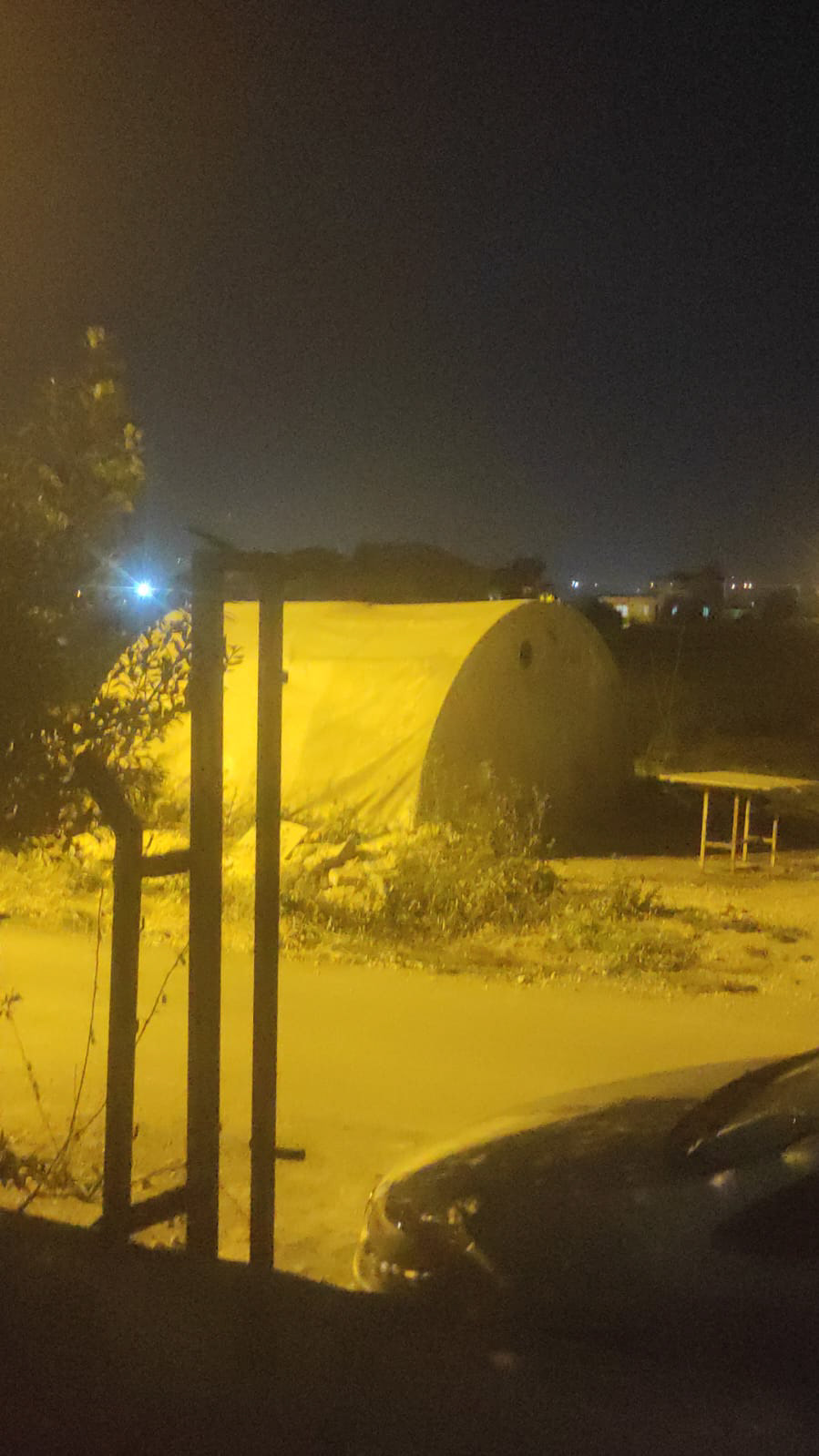
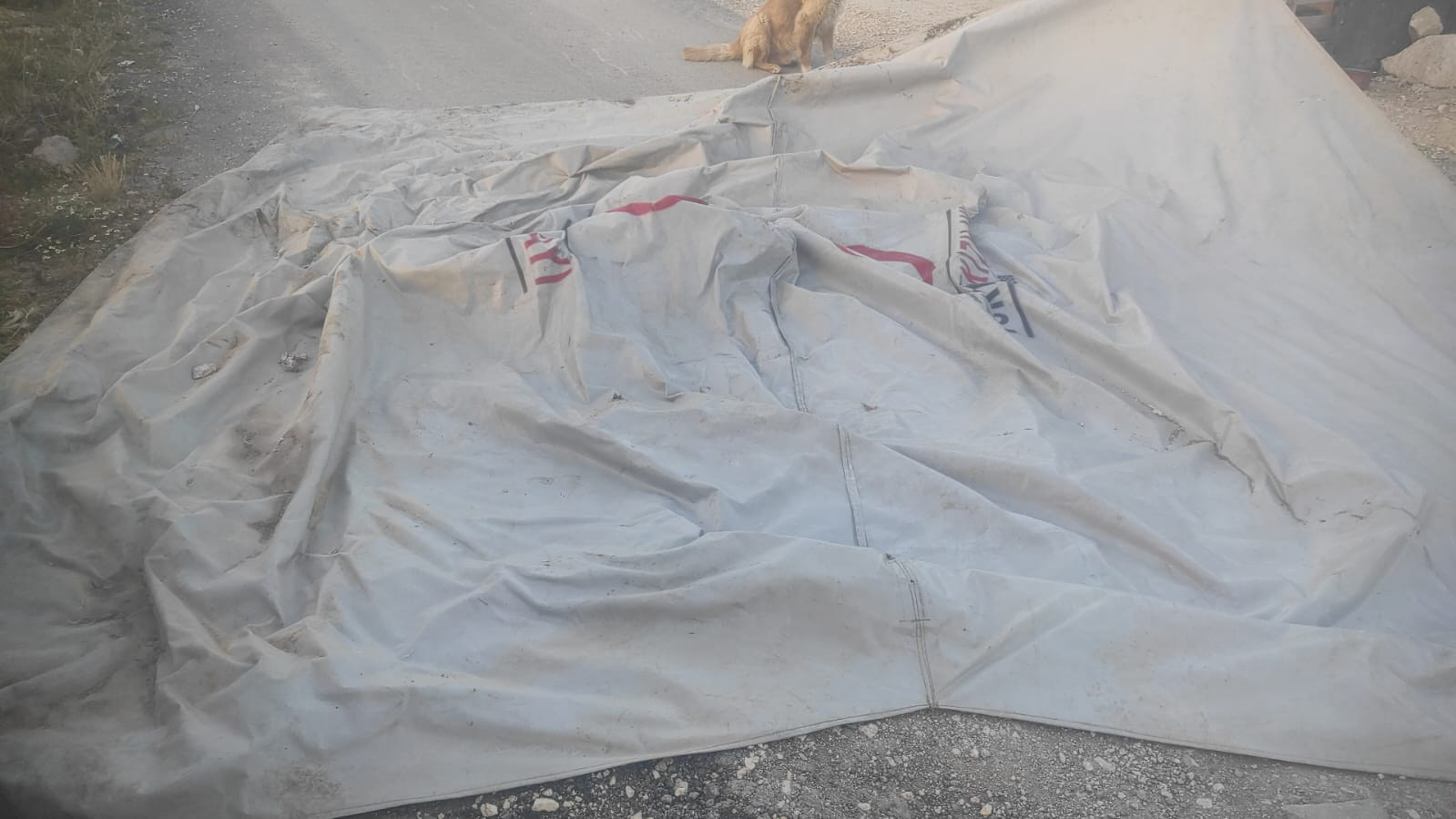
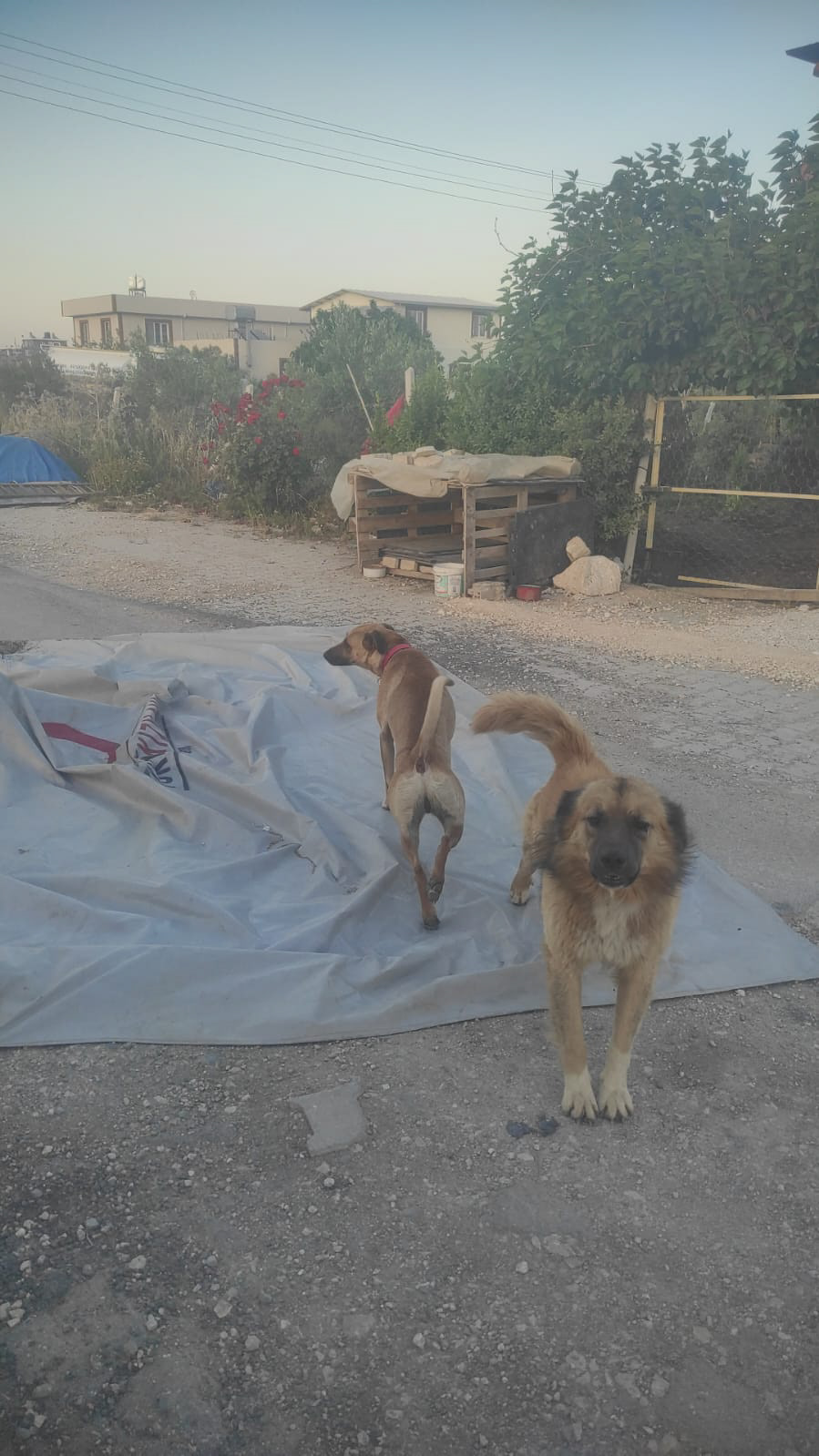

By re-inscribing Musakhan onto this tent, I wanted to draw a line between Hatay and Gaza—two places on the eastern coast of the Mediterranean where people rebuild, cook, and persist within systems that repeatedly collapse on them.
This text, printed in the Hamaset typeface, is overlaid with handwritten letters. The handwriting functions as a counter-layer—intimate and human—against the constructed font. It marks the tension between the formal and the personal, between the collective and the individual hand. The meeting of these two scripts—the designed and the handwritten—also indicates where the monument connects with the body, and where language transitions from a system to gesture.
For me, the second iteration of Musakhan is not a memorial. It extends from the original Musakhan sculpture but changes its temperature. It transforms the heat of the metal into the heat of lived material—the tent, the ink, the handwriting, the air that moves through fabric.
